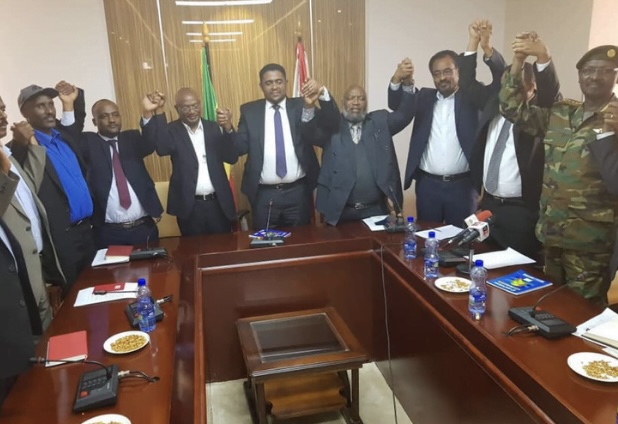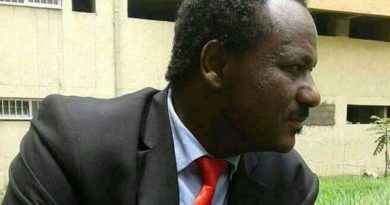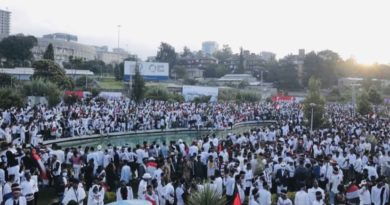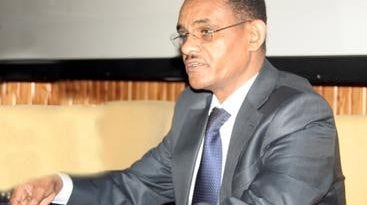In Depth: Resolving OLA-Ethiopia conflict
The following is a submission by anonymous Yeroo media contributor & independent Oromo researchers
The Oromo Liberation Army (Shane) and Government Forces’ Post-2018 Conflict in Guji Zone, Oromia Region & way forward
In Ethiopia’s Oromia Region lies a zone known as the Guji zone. The Zone is bordered by Borana on the south, the Southern Nations, Nationalities and Peoples Region and the Sidama Region on the west, the Ganale-Dorya River on the north, which separates it from Bale, and the Somali Region on the east. Following the separation of the highland woredas from the Borana Zone in September 2002, the Zone was created.
The Guji ethnic group speaks Oromo and lives according to traditional Oromo culture. They are even said to be the ones who have kept the Oromo customs alive (Roba, 2019). To put it another way, the traditional Oromo customs are still alive and well in Guji culture. Except for the Borana Oromo, the Guji Oromo appears to be unique from Oromos from other regions of the nation in terms of their manner of life and dialect. They share some ways of life with the Borana Oromo and speak a dialect that is similar to that of the Borana Oromo (Van-de-Loo, 1991).
Regarding its natural resources, the Guji can be said the backbone of the Ethiopian economy as it hosts the country’s largest gold deposit, the Laga Dambi mining site, and other precious minerals. The region is also rich in natural resources including virgin forests of Anfarara, fertile land for crop production, and rearing of animals, which seem to attract people from other parts of Ethiopia to it. Asebe Regassa et al. correspond that because of the area’s natural resources, many people immigrated to the area from the neighboring areas like Gedeo, Sidama, and distant areas like Shewa and different parts of the country as miners, farmers, and merchants (Debelo Jirata, 2018).
There have been several conflicts in the Guji zone, mostly related to inter-ethnic conflicts. Several studies have been conducted on the dynamics of these conflicts, including, the inter-ethnic conflict between the Guji Zone in Oromia and the Gedeo Zone (Roba, 2019); on land use and tenure security, i.e., specifically over grazing land which are at times fueled by ethnic elites of the two Zones. In their research, they have indicated that: first, disputes over boundaries are the most frequently reported kind of conflict; second, many conflicts result from changing administrative boundary definitions; third, there are significant spatial differences in the incidence of conflict; four different institutions are approached to resolve different kinds of conflict; and fifth, satisfaction with outcomes is not influenced by institution selected.
There has also been a good deal of research on ethnicity and conflicts for example by Samir Yusuf (2019); Kinfemichael(2014) on Resolutions of Conflicts; Regassa (2021) on frontiers of extraction and contestation: Dispossession, exclusion and local resistance against MIDROC Laga-Dambi gold mine;(Sackey, 2020) on conflict-induced internally displaced persons. All of the above-mentioned conflicts have been resolved now. Nevertheless, after the regime change in Ethiopia in June 2018, there have been reports of hundreds of sudden killings of civilians, and most populations in the attack area are forced to leave their homes for the sake of safety. Moreover, these studies did not address the ongoing conflict in Guji Zone.
This writing examines the post-2018-armed conflict between the Ethiopian government and the Oromo Liberation Army, often known as Shane, which has been active in most regions of Oromia, particularly in the West and East Guji and KelemWollega Zones. In the Guji Zone and the adjacent Somali Regional state, some ungoverned spaces could create a fertile ground for the rebel faction to easily access weapons, loot precious metals and other resources and also create links with some terrorist organizations like Al-Shabab and this has national security implications.
Conflict Actors and Primary Sources of Support
Reports from the government media, the community leaders such as Abba Gadaa in the Guji zone of Oromia regional government unveil that there have been several attacks, killings of civilians, and unrestricted looting of resources since the regime change in April 2018 (Walta Info, 2018). Due to the existence of unidentified armed groups (UAG), the dispute appears to be dividing communities, separating those who favor the government from those who support the UAGs. Woredas in which these attacks have been intensified include Aga Wayu,Gumi Eldelo, GoroDola, Liban, Saba Boru, and Wadara. Albeit the identity of the attackers had not been identified in the initial season, all the government, the attackers, and the public of the Guji zone now know them as Oromo Liberation Army (OLA) Shane, one of the variants of the OLF.
The Oromo Liberation Army (OLA) Shane was originally the military wing of the Oromo Liberation Front (OLF) and split from the OLF in April 2019 due to disagreement over disarming its fighters. OLF-Shane is led by a committee of army commanders. It is largely based in Kelem Wellega, East Guji, and West Guji Zones of Oromia. The main objective of the group, as they claim is to establish an independent Oromia. In 2018, it was estimated that OLF-Shane had around 2,800 fighters although it is likely this number has increased substantially since 2020. The group is mainly active in the Oromia region and conducts regular attacks against government officials, military forces, police, and civilians alike. The group has an urban ‘hit squad’ labeled “Abbaa Torbee,” which is often involved in violent operations in cities.
Moreover, in Guji Zone, Abba Gadaas and other community leaders claimed that this group can be blamed to be responsible for the killing of innocent people, and carrying out attacks on civilians including rape and bank robberies (Gadaa, 2022). While OLA-Shane hides the forces in the bushes and they use motorbikes to hit and run. These rebels usually avoid confrontation with large troop units but seek and attack small groups. The most serious attack they launched was in April 2020 when they killed 12 Oromia special police troops at Gumi-El-dallo Woreda in the Guji zone. Their technique is to ambush a government army convoy or strike in a public place and then flee, mostly on motorcycles.
As data we have gathered from the interviews, namely the current Abba Gadaas of Guji indicate, the Ethiopian central government has engaged in the conflict as recently as March of 2022. Prior to the engagement, the Oromia regional government has been deploying its special police forces and some trained militias selected from the area. Nevertheless, the effort of the Oromia regional government has not been as effective as planned. Thus, the primary actors of the conflict are the OLA Shane, and the central government along with its Oromia region allies. Some community leaders also indicated that the general public of the Guji Zone, especially the farmers has been engaged in armed defense against the Shane group. Thus, for the sake of analysis, we can add the public to the conflicting parties.
Regarding these conflicting parties’ primary sources of support, from the early attacks to January 2022, the new territorial expansion by the OLF Shane may indicate that the group is getting high support in rural and urban areas of the Oromia region as well as from abroad. OLF-Shane militant groups took control of numbered above-mentioned woredas in the Guji zone after overwhelming local militias (ACLED, 2022). What is the primary interest of OLA Shane? Why was it separated from its original trunk, namely OLF? Actors in any conflict have varying and even divergent interests, goals, positions, capacities, and relationships with other actors, and the same applies to OLA Shane in Guji Zone.
In 2018, as part of the reform in government, the EPRDF parliament removes the Oromo Liberation Front (OLF) from the list of terrorist organizations. Then later in august 2018 the exiled leaders of the OLF signed a peace deal with Prime Minister Abiy’s government and agreed to return to Ethiopia. In October 2018, even though the government media reported the OLF has agreed to disarm (Walta Info, 2018), Dawud Ibsa, the chairman of the OLF seemed to disapprove of the claim of the government as he asserted, “there will be no one who disarm and will disarm”(Walta Info, 2018). Nevertheless, he later seems to agree with the government to disarm its combatants.
Nonetheless, Kumsa Diriba, a.k.a. Jaal Marro, one of the OLF’s leaders, is unable to negotiate an agreement with the government over fighter disarmament. Jaal Maro’s section breaks away from the OLF and forms the OLA to fight thegovernment for the ‘liberation’ of Oromia. The government refers to the faction as OLF-Shane. One of the former OLF activists, Nagessa Dube says that after Abiy came to power, people that opposed the hegemony of the TPLF supported OLA regardless of contradictory political goals (Dube, 2020). Then with the weakening of the then TPLF-dominated security apparatus, the OLA gained autonomy mainly among the Oromo population. In Addition to those corrupted officials under the former regime started supporting OLA in exchange for protection from the militant group (Dube, 2020).
In their response to Nagessa’s allegation on August 6, 2020, a group that call themselves an OLA task force acknowledged that thousands of people have been killed in the east and West Guji zones, maybe more than he indicated (Force, 2020). They claimed that since PM Abiy took office, murder, torture, rape, looting, devastation, and burning of communities have been commonplace in the area (Force, 2020).
The OLA task force further accused the government, which Nagessa (now working independently) appears to be a high-ranking official by the time. Their accusation of Nagessa and the government include: (1) If the OLA was responsible for the killings and tortures, as Mr. Nagessa claims, why would the Prosperity Party government want the area closed off to the media and human rights organizations (though the independently-run EHRC had made effort), and refuse repeated calls for a free and independent investigation into the killings and tortures in the region? What exactly is the government trying to hide if it hasn’t done anything wrong? they claim (2) OLA force operating in the region is almost entirely made-up youth from that region. They are children of east and west Guji and Borana zones who were left with no choice but to pick up guns to confront the dictatorial regime causing untold suffering to their community. They are protected and fed by their people and operate among them. Why would OLA kill and destroy the same community that it hailed from that provides it shelter, food/drink, and vital information about the government? they argue.
Community leaders we have interviewed claim the OLA’s other means of support was their strategy of kidnapping members of the Guji community in exchange for ransom(Gadaa, 2022). With this forceful strategy, OLA started losing their genuine support from the people of the area, they allege. Nagessa also held that from his discussion with OLA commanders he was able to find out that the split the OLF and the OLA made was tactical. This, as he argues has implications that the OLA operates with the knowledge of the OLF leaders. To support his claim the press statement the OLF forwarded on 14th April 2022, states, “The current futile endeavor by the Prosperity Party to eliminate the forces of freedom, i.e., OLA that is wholeheartedly embraced and supported by the Oromo People…” (Dube, 2020); it showed no condemnation against OLA nor did it claim the faction illegitimate.
After having struck an alliance with the Tigrean People’s Liberation Front (TPLF) the west wing leader of the OLA, JaalMarro alleged they will be fighting together against their common enemy which indicated a joining of force and supportfrom each side to one another. On the ENDF’s side, the government has been using its media outlets to report anti-OLF protesters taking place locally and abroad. This had supported the ENDF in building back good public opinions (Ethiopian Peace Observatory: monthly, 2021) despite the frustration of the Oromo people after feeling betrayed both by OLA and the central government.
Until the Oromo Liberation Front (OLF) commanders chose to forsake military conflict and return home to participate in peaceful political processes upon the PM Abiy’s call in 2018, the Oromo Liberation Army was one of the several operational wings of the OLF. In the 2021 national election, the OLF registered as a national party with the Ethiopian National Electoral Board and opened offices in many areas, including Oromia, Amhara, and Benishangul-Gumuz. In the presence of the president of the state of Oromia, and the Abba Gadaas, the OLF openly stated that it had entirely abandoned armed resistance and surrendered its fighters to the Oromo people on the 9th of August 2018. Following that, the OLF chairman signed a letter asking the OLA top commanders to lay down their guns and return to a peaceful existence.
After the disarmament, the Abba Gadaa Council take over and deal with OLF’s armed members and concerns linked to their prospective disarming, a committee of 71 persons from different backgrounds was constituted at the Abba Gadaa Council’s peace conference to further process the demobilization (Standard, 2019). The group visited western and southern Oromia, where they spoke with OLA members and commanders.
Nevertheless, the OLA has stated that it would not lay down arms until the government shows a willingness to sit down in the presence of a third party and seek a negotiated settlement on Ethiopian and Oromia political, economic, and social concerns(Force, 2020). OLA further accused the government of its lack of willingness to embark on such a thorough peace dialogue as a standard ploy. This was the prominent driver and incompatibility of the OLA that led it to be legally disassociated itself from its parent group OLF and established the OLA High Command, a.k.a. OLA Shane to offer general leadership after openly rejecting the idea as a farce. The committee submitted their reports in front of high leadership from the front and the state of Oromia, including the president, verifying that the OLF is not involved in any OLA actions.
The OLA Shane has a complex interconnection with the Oromo community’s social, cultural, historical, and political ties. These factors posed a challenge for the ruling party to forcefully defuse it since it has begun its operation through the Oromia Regional Government’s Special police forces in October 2018 (Tsion, 2020). As we have gathered a piece of information from the community leaders, and dwellers of the area, the trend since the two groups started a fight is complicated: causalities have been reported from both sides.
A Way Forward: Strategies to Resolve the Conflict
The ongoing conflict in the Guji Zone of the Oromia Region has both generic and context-specific dimensions, and hence the way-outs should be thought of at similar levels of analysis. On the one hand, the bloody battle between the incumbent Government of Ethiopia (along with the Regional Government of Oromia) and the rebel group (Shana/OLA) has a national dimension or is part of the broader historic animosity and unhealthy competition for power, interests, and needs among ethnic elites. In this context, the solution to the crisis in the Guji Zone of the Oromia Region depends on broad initiatives or holistic measures taken at the national level involving all relevant stakeholders. On the other hand, as every case is unique, and so does the security problem in Guji Zone, it requires unique measures that adequately fit to address the interests and needs of the grassroots (local population).
Therefore, we attempted to structure the way-outs by looking at the national, regional, and local political, social, and security contexts. At the national level, we suggest that the incumbent Government of Ethiopia should adopt a new path to addressing the age-old and deeply entrenched problems of the country that is different from what its predecessors had followed for several decades and even for centuries. First and foremost, the Government should develop a shift of understanding or a new ontological and epistemological stance on what counts as ‘victory’. The incumbent Ethiopian Government should realize the fact that these days total and ultimate victory will come from winning the hearts and minds of its citizens (including political opponents and those militarily battling with) rather than suppressing deep-rooted discontents and conflicts by force.
The Oromo people have a well-established socio-political and cultural organization for the peaceful settlement of disputes. It appears apparent that the OLA/Shane is an offshoot of the OLF. In Guji Zone, the rebel faction (OLA) has been accused of killing and kidnapping innocent civilians and local government officials. The Oromo Liberation Army is also accused of killing some Abbaa Gadaas. In doing so, the OLA/Shane has been violating the fundamental principles and laws of the Oromo Socio-cultural organization, the Gadaa system. These acts are against the moral and ethical order of these traditional political organizations. According to the principles of the Gadaa system, it is ethically and morally prohibited for an Oromo to kill another Oromo. Until the recent Federal Government’s intervention, the violent conflict in Guji Zone has been primarily a battle fought between the security forces of Oromia Regional State and OLA/Shane. This act of violence against one’s brother could be considered an overt violation of the long-established Oromo culture and tradition.
Therefore, the OLA leadership should also embrace an ontological and epistemological shift in their understanding of the true essence of ‘victory’ today. They should explore and be aware of the potential of non-violence as a superior method of political struggle for liberation and other causes. The recent Oromo youth’s (Qeerroo) non-violent movement that ousted the TPLF-led EPRDF Government from power is a case in point. Unlike the civil wars the country had witnessed in its recent past, the non-violent struggle of the Oromo youth against TPLF has been proved successful at minimum casualties and in a relatively short period.
The ongoing conflict in Guji Zone between Government forces and OLA/Shane does not reach the stage of mutual hurting stalemates (MHS) and this may not happen even soon. The fight between the two forces is not an organized front. As the rebel faction adopted the guerilla tactic and has a relatively strong social base as well as the availability of ungoverned spaces for getting access to weapons and finance, it is not easy for the Government security forces to achieve total victory in a short period. The same is true for the rebel group to defeat Government forces and oust the Federal Government from power. Today is not yesterday. Yesterday, the collective struggle of EPLF, TPLF, OLF, ONLF, and other ethno-nationalist factions had overthrown the Dergue Government when the international power calculus became uni-polar. But today the world is multi-polar with diverging and at times conflicting interests and hence the conflicting parties do not most probably lose support for the continuation of its struggle.
By extension, the only available option onboard both conflicting parties equally benefit from is the peaceful resolution of their disputes. The Government and the rebel faction should engage in genuine dialogue to avoid the mistrust that led them to violent conflicts. This commitment to peaceful settlement of disputes between the Government and OLA/Shane could be more effective if it is done under the umbrella of the Gadaa system with the involvement of all key stakeholders. In addition to this, as the OLA is an offshoot of the Oromo Liberation Front (OLF), the leadership of the OLF should take the initiative to mediate between the two conflicting parties. The role of top OLF leadership in mediating the process should not be overlooked because some top political leaders of the OLF have an attachment with the two conflicting parties.
If the two conflicting parties agreed to settle their disputes peacefully under the umbrella of the Gadaa system (track 3 mediation) or through OLF (mediating the process) and they have reached enforceable agreements, DDRR and SSRG should follow with the support of stakeholders (domestic and international donors) as post-conflict peace-building processes.
Finally, beyond being a national security issue, the conflict in Guji Zone has some security implications for the neighboring states and the Eastern Africa sub-region. Therefore, the international community (UN), African Union, and IGAD are also duty-bound as part of ensure regional and international peace and security. These regional and international organizations and/ or the international community as a whole should channel direct financial and technical support to the Ethiopian Government to conflict prevention, conflict management, and post-conflict peace-building endeavors.
References
ACLED. (2022). ACLED. Retrieved from https://acleddata.com/dashboard/#/dashboard
Debelo Jirata, A. R. (2018). Peace Is Not a Free Gift: Indigenous Conceptions of Peace among the Guji-Oromo in Southern Ethiopia. Northeast African Studies, 18(1-2), 201-230.
Dube, N. (2020, August 3). Ethiopian Insight. Retrieved from Guji Oromo need freedom from liberators: https://www.ethiopia-insight.com/2020/08/03/guji-oromo-need-freedom-from-liberators/
Force, G. O. (2020, August 6). Mytzta. Retrieved May 28, 2022, from Response to Mr. Nagessa Dube’s, “Analysis” on the Freedom of Guji Oromo from itself: https://mytzta.com/response-to-mr-nagessa-dubes-analysis-on-the-freedom-of-guji-oromo-from-itself/
Gadaa, T. G. (2022, May). Haala Nageya Godina Keennaa Ilaalchisee. (G. T. Berisso, Interviewer)
Tsion Belay (2020). IPSS Peace and Security Report. Ethiopia Conflict Insight, Vol. 1. May 2020. Addis Ababa: Addis Ababa Unversity.
Kinfemichael, G. (2014). The Quest for Resolution of Guji-Gedeo Conflicts in Southern Ethiopia: A Review of Mechanisms Employed, Actors and Their Effectiveness. Ethiopian Journal of the Social Sciences and Humanities, 1(10), 59-100.
Regassa, A. (2021). Frontiers of extraction and contestation: Dispossession, exclusion, and local resistance against MIDROC Laga-Dambi gold mine, southern Ethiopia. The Extractive Industries and Society.
Roba, G. O. (2019). Indigenous mechanisms of preserving sacred natural sites in Guji Oromo, Adoola Reedde, and Anna Sorra districts, southern Ethiopia. Cogent Food & Agriculture, 5(1609765).
Sackey, R. E.-N. (2020). A Step towards Resilience: Response to the Conflict-Induced Displacement in the West-Guji andGedeo Zones of Ethiopia 2018. Master’s thesis, UiT Norges arktiske universitet.
SSRC. (2018). Social Science Research Council. Retrieved from Current trends in violent conflict: https://www.ssrc.org/
Standard, A. (2019, January 24). Addis Standard. Retrieved from Breakthrough as government, OLF-SG agree on an immediate ceasefire, an encampment of the rebel army in 20 days: https://addisstandard.com/news-breakthrough-as-government-olf-sg-agree-on-immediate-ceasefire-encampment-of-rebel-army-in-20-days/
Van-de-Loo, J. (1991). Guji Oromo culture in southern Ethiopia: religious capabilities in rituals and songs. In Collectanea Instituti Anthropos (Vol. 39, p. 357 pp. 16 Plates). Berlin: Dietrich Reimer Verlag.
Walta Info. (2018, October 11). Retrieved from Government says OLF disarm to enter into a home, urges to disarm remaining forces: https://waltainfo.com/21112/
Yusuf, S. (2019). Drivers of ethnic conflict in contemporary Ethiopia. Institute for Security Studies Monographs, 2(202), 46.




